Cleanup and Reuse Success Stories: Cleanup Enforcement Benefits Communities
EPA’s cleanup enforcement program has helped make a difference in thousands of communities impacted by hazardous waste contamination. The goal of the cleanup enforcement program is to ensure that responsible parties clean up the properties they contaminate. EPA identifies parties responsible for contamination and ensures polluters -- rather than American taxpayers -- perform and pay for prompt and protective cleanups. The cleanup enforcement program also facilitates site reuse and redevelopment by addressing potential liability concerns of purchasers, lenders, and local governments.
The success stories below highlight the efforts of the cleanup enforcement program to clean up contaminated sites and work with responsible parties, communities, state and local governments, and other stakeholders to protect human health and the environment and bring about economic, recreational, and habitat improvements.
On this page
- Negotiating Cleanup and Supporting Reuse in the 2010 General Motors Bankruptcy Settlement Agreement
- Adaptive Enforcement Secures Long-Term Stewardship in Sheffield, Illinois
- Collaboration and Innovation Bolster Contamination Investigation Efforts in East Chicago, Indiana: Citgo & Oxy Superfund Site
- Greener Cleanup and Renewable Energy - Rancho Cordova, California: Aerojet General Corp. Site
- Industrial Redevelopment Spurs Economic Growth - Conroe, Texas: Conroe Creosoting Site
- Economic Success - North Kansas City, Missouri: Armour Road Site
- Community Priorities/Redevelopment - Seffner, Florida: Taylor Road Landfill Site
- Economic Redevelopment - Kansas City, Kansas: Kansas City Structural Steel Site
- Green Space Development - Chicago, Illinois: Celotex Corporation Site
- Residential Yard Cleanup - East Helena, Montana: East Helena Site
- Industrial Park Redevelopment - Cortland, New York: Buckbee-Mears Site
- Habitat Restoration - Olathe, Kansas: Consolidated Chemicals, Inc. Site
- Commercial/Green Space Development - New Haven, Connecticut: Pharmacia & Upjohn Company LLC Facility
Negotiating Cleanup and Supporting Reuse in the 2010 General Motors Bankruptcy Settlement Agreement
On June 1, 2009, General Motors Corporation (GM) – then the second- largest automotive manufacturer in the world – filed for bankruptcy. The complexity and urgency of the situation was unparalleled. EPA and its partners, including the U.S. Department of Justice (DOJ), the U.S. Department of the Treasury (U.S. Treasury), more than a dozen state attorneys general and the St. Regis Mohawk Tribe (SRMT), worked with Motors Liquidation Company (MLC), GM’s successor, to negotiate a bankruptcy plan and settlement agreement to make sure funds were set aside to clean up contamination at 89 former GM-owned properties across 14 states. In addition to providing funds for cleanup and future operation and management of the properties, the settlement also envisions the redevelopment of the appropriate sites in the trust, with sustainable reuse, long-term stewardship and community benefits as top priorities.
Read about the General Motors Superfund site (pdf)
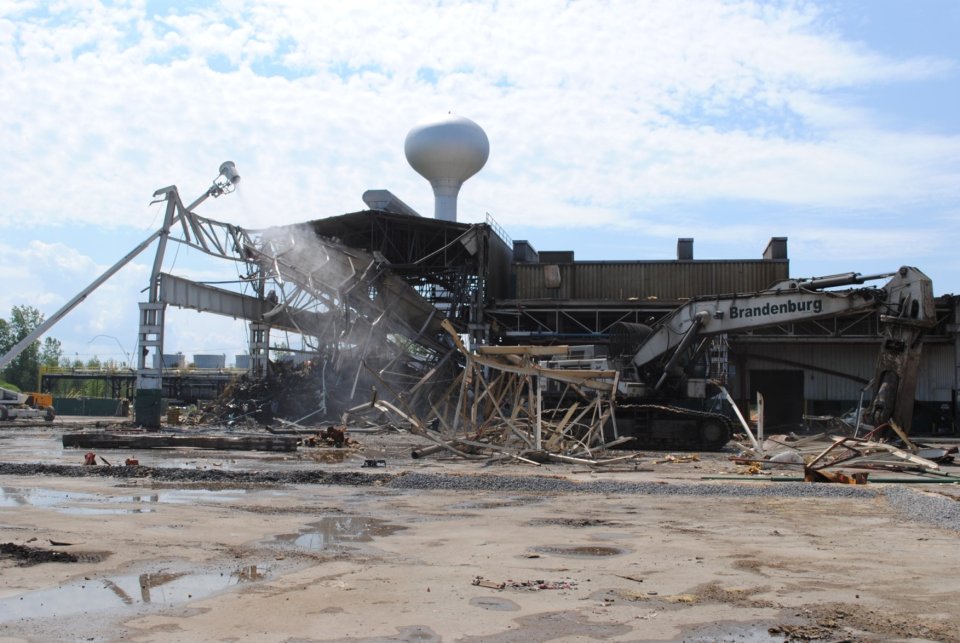
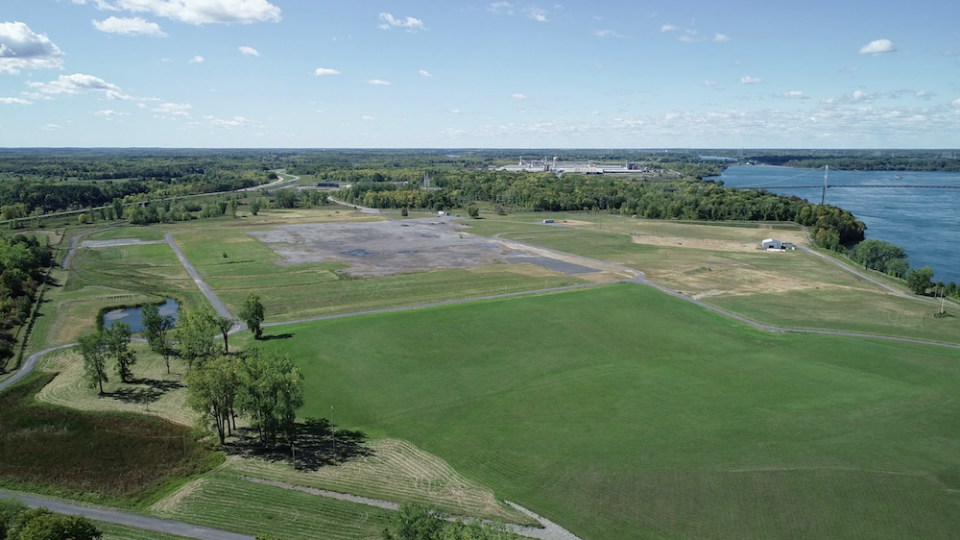
Adaptive Enforcement Secures Long-
Term Stewardship in Sheffield, Illinois
At the US Ecology, Inc. site in Sheffield, Illinois, the U.S. Environmental Protection Agency’s (EPA’s) enforcement mechanisms forged a new path to protecting human and environmental health through long-term stewardship. EPA determined that the site needed an enforceable strategy to ensure continued long-term monitoring and maintenance activities as well as additional cleanup work, if needed. This case study highlights how strong collaboration among EPA’s Resource Conservation and Recovery Act (RCRA) program, Illinois EPA and the site owner, US Ecology, resulted in updating one of the oldest RCRA corrective action orders to better protect human health and the environment at the site.
Read more about the US Ecology Superfund site (pdf)


Collaboration and Innovation
Bolster Contamination Investigation
Efforts in East Chicago, Indiana: Citgo & Oxy Superfund Site
At the former Cities Service Refinery facility in East Chicago, Indiana, the U.S. Environmental Protection Agency (EPA) worked with the facility owners to expedite investigation of contamination at the facility and prepare for cleanup work, known as “corrective action,” under authority of the Resource Conservation and Recovery Act (RCRA). In 2020, Citgo and Oxy entered into settlement cleanup agreements with EPA for the active tank terminal and closed refinery area. The settlements required Citgo and Oxy to clean up the contaminated areas and required the companies to support job creation and use greener cleanup best management practices to reduce the environmental footprint of cleanup activities and include long-term sustainability measures.
Read more about the Citgo and Oxy Superfund site (pdf)

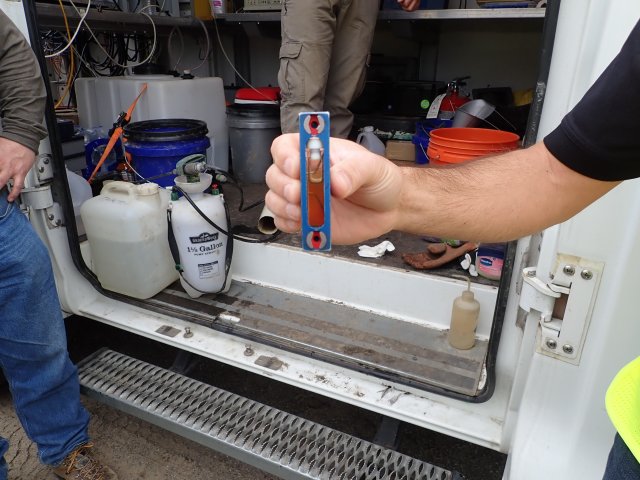
Greener Cleanup and Renewable Energy - Rancho Cordova, California: Aerojet General Corp. Site
At the 5,900-acre Aerojet General Corp. site in Sacramento County, CA, EPA enforcement staff worked collaboratively with state and local government agencies and the potentially responsible party, Aerojet Rocketdyne, to reach an agreement on cleanup work that would protect public health, integrate a greener cleanup approach, support environmental restoration and renewable energy generation, and allow for environmentally responsible reuse. Aerojet and their solar development partners constructed a 6-megawatt solar project system producing 20 percent of the power needed to operate Aerojet’s extensive groundwater remediation program. It was one of California’s largest solar farms.
Read more about the Aerojet General Corp site (PDF) (4 pp, 1.36 mb, About PDF)

Construction of 6-megawatt solar project system.

Solar farm in Rancho Cordova, CA was one of the largest single-site industrial installations in the U.S.
Industrial Redevelopment Spurs Economic Growth - Conroe, Texas: Conroe Creosoting Site
At the Conroe Creosoting Superfund Site in Southeast Texas, EPA and the Texas Commission on Environmental Quality (TCEQ) used enforcement and reuse tools to address liability concerns, complete cleanup actions and allow for beneficial commercial and industrial development. Significant and sustained cooperation and communication among Conroe Logistics Center, EPA, and TCEQ resulted in a Bona Fide Prospective Purchaser Agreement. The settlement enabled the purchaser and developer to move forward with their property purchase, complete cleanup actions and begin construction of an industrial distribution center. Today, complete with infrastructure improvements and rail spurs, the Site hosts a 612,000-square foot Home Depot distribution center which provides local job opportunities and tax revenue for the community of Conroe in Montgomery County, Texas.
Read more about the Conroe Creosoting site (PDF) (4 pp, 957 k, About PDF)
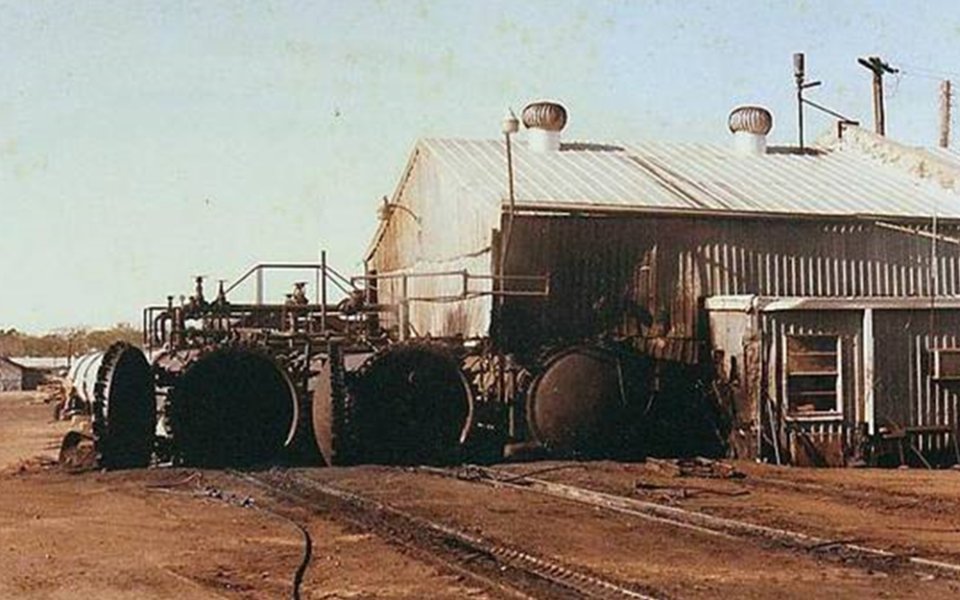
The former wood treating facility at the Conroe Creosoting site began operations in 1946.
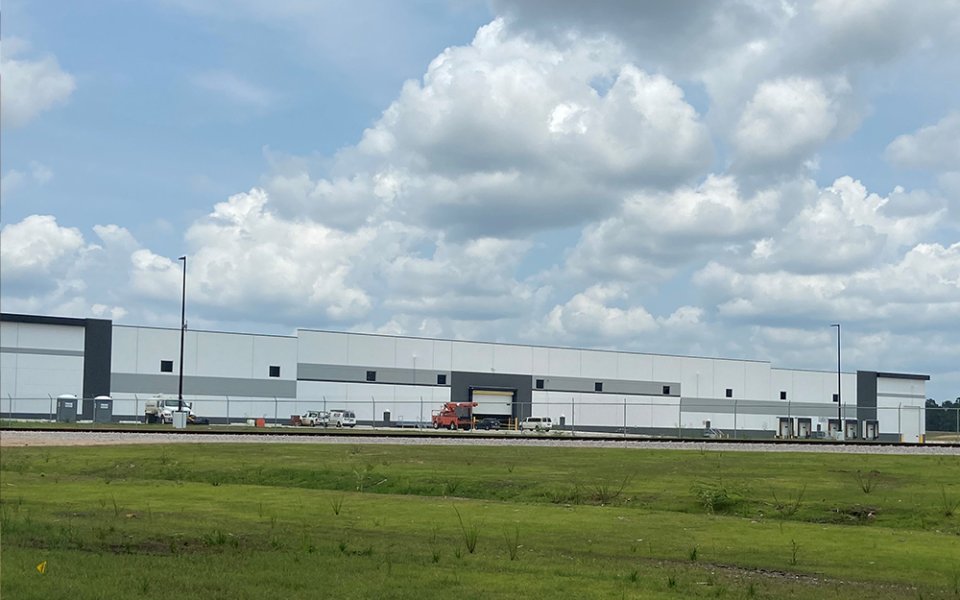
612,000-sq.ft. industrial distribution center on former Conroe Creosoting site.
Economic Success - North Kansas City, Missouri: Armour Road Superfund Site
At the Armour Road Superfund site, the EPA worked collaboratively with responsible parties, state and local governments, and stakeholders to the benefit of the community. The EPA used enforcement tools at the site to:
- Identify and conduct cleanup activity;
- Address community priorities, and
- Facilitate safe redevelopment in the area.
The 1.8-acre Armour Road site, formerly used as a herbicide blending facility, is now home to a restaurant and orthopedic office which serve as catalysts for commercial and residential redevelopment in the surrounding area as well.
Read more about the Armour Road site (PDF) (4 pp, 1 M, About PDF)

Removal action underway at the Armour Road Site.

The view approaching the Armour Road Site in North Kansas City.
Community Priorities/Redevelopment - Seffner, Florida: Taylor Road Landfill Site
At the Taylor Road Landfill Superfund Site, EPA, worked cooperatively through enforcement mechanisms, to pursue cleanup activities that addressed community priorities and facilitated safe and beneficial redevelopment of the site.
EPA and responsible parties negotiated several settlement agreements to get the site cleaned up. The cleanup work under the settlements allowed the Site to be revitalized. The benefits to the community and the environment include:
- Community recycling and collection centers,
- Recreational opportunities with a new park for flying model airplanes,
- And restored ecosystems, including large ponds for wildlife habitat.
Read more about the Taylor Road Landfill site (PDF) (4 pp, 1 M, About PDF)

The Tampa Radio-Control Aircraft Club located on the former landfill.

A new model plane runway and park at the Site welcome over 1,000 visitors each year.
Economic Redevelopment - Kansas City, Kansas: Kansas City Structural Steel Site
At the Kansas City Structural Steel (KCSS) site, EPA, working with local organizations, used a prospective purchaser agreement to:
- Support the community’s reuse priorities,
- Address environmental liability concerns,
- Ensure long-term cleanup protection, and
- Create new long-term jobs and economic stability.
The former 22-acre contaminated steel and metal fabrication property, located in the heart of Kansas City’s Argentine neighborhood, is now home to:
- A large neighborhood market,
- Two restaurants,
- A new police station, and
- Two proposed commercial developments.
Read more about the Kansas City Structural Steel site (PDF) (5 pp, 2 MB, About PDF).

Refining of gold, silver, and lead during the late nineteenth century in a facility housed on what would become the KCSS site.

The Walmart Neighborhood Market built as part of the redevelopment of the KCSS site after cleanup.
Green Space Development - Chicago, Illinois: Celotex Corporation Site
At the Celotex Corporation site, in Chicago's vibrant Little Village neighborhood, EPA enforcement staff collaborated with local stakeholders to craft an enforcement agreement that facilitated site cleanup. This cleanup led to the development of a much needed community park. For the first time in that community, 6,000 children who live within a 10-minute walk of the park have easy access to green space.
Read more about the Celotex site (PDF) (6 pp, 2 MB, About PDF).

Buildings on the parcel of land that made up the Celotex Corporation site.

The LaVillita Park playground and picnic pavilion support community recreation activities after site cleanup.
Residential Yard Cleanup - East Helena, Montana: East Helena Site
In East Helena, EPA’s cleanup enforcement program negotiated enforcement agreements to ensure a safe and timely cleanup of a 140-acre former smelter site that impacted over 1,500 residential properties. EPA’s enforcement settlements with the responsible parties led to comprehensive cleanup efforts, and established a financially stable custodial trust to support much needed community development, including:
- New subdivisions,
- Commercial districts,
- Rail-ready industrial parks, and
- Recreation- and heritage-based uses.
Read more about the East Helena site (PDF) (6 pp, 1 MB, About PDF).

Excavator cleaning up residential property in East Helena, MT.

Transformed residential yard in East Helena, MT following cleanup work.
Industrial Park Redevelopment - Cortland, New York: Buckbee-Mears Site
At the Buckbee-Mears site in southcentral New York State, EPA’s enforcement efforts brought key parties together to work on innovative settlement agreements and resolve competing liens. The property is now known as the Cortland Industrial Center. The owner/developer identified a tenant for the property and is in the process of finalizing a long-term lease agreement. Once a lease is finalized, the new tenant will manufacture industrial grade wood pellets. EPA’s enforcement approaches resulted in the transformation of a once neglected, abandoned property into an industrial park that will foster local economic development opportunities throughout the community.
Read more at the Buckbee-Mears site (PDF) (6 pp, 3 MB, About PDF).

Debris associated with deconstruction phase of cleanup at Buckbee-Mears site.

Manufacturing building developed after cleanup and redevelopment at Buckbee-Mears site.
Habitat Restoration - Olathe, Kansas: Chemical Commodities, Inc. Site
Thanks to the efforts of EPA, its partners, and site stakeholders, the formerly hazardous Chemicals Commodities, Inc. (CCI) site in Olathe, Kansas, has been transformed from a dangerous chemical recycling facility, located within a residential neighborhood, into a beautiful pollinator prairie park.
EPA’s enforcement program identified the parties responsible for the contamination at the site. The responsible parties then cleaned up the site and implenented long-term protection and stewardship of the site by planting native species that attract bees, birds, and butterflies. The area is a beautiful community park, and stands in stark contrast to the chemical recycling facility that once contaminated the site.
Read more about the Chemical Commodities, Inc site (PDF) (6 pp, 5 MB, About PDF)

Drums, debris and other wastes collect on site threatening the health and well being of nearby residents.

Habitat garden creates home to the Olathe, Kansas Pollinator Prairie.
Industrial and Green Space Redevelopment – North Haven, Connecticut, Pharmacia & Upjohn Company LLC Facility
By EPA, the state, and the company working together to achieve site cleanup and reuse, an agreement was reached that will create long-term benefits for the community. A facility in North Haven Connecticut, is being transformed into commercial and light industrial use on one end along with restoration of approximately 60 acres of wetlands and meadow habitat along the Quinnipiac River providing for recreation and environmental education opportunities.
This case study demonstrates how, EPA, Pfizer, and the North Haven community achieved positive results using a collaborative enforcement process and use of appropriate enforcement tools which lead to one of the largest cleanups in the history of EPA’s Resource Conservation and Recovery Act (RCRA) program.
Read more about the Pharmacia & Upjohn Company LLC Facility (PDF) (7 pp, 1 MB, About PDF)

Repurposed slag from a furnace blast was used to build a barrier wall to protect the Quinnipiac River from groundwater contamination.

A portion of the walking trails with signage that currently provide opportunities for recreation and environmental education.
